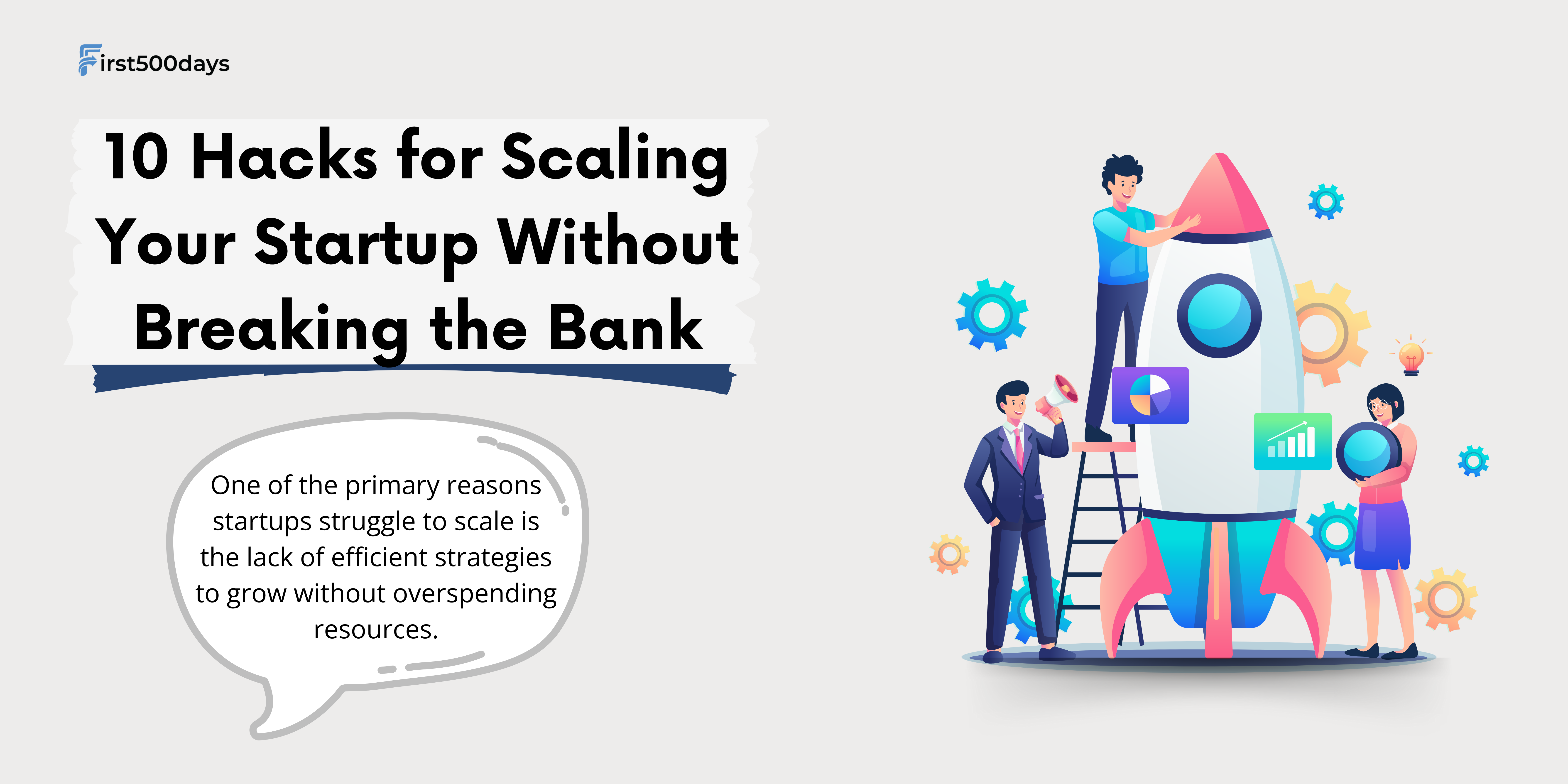One of the primary reasons startups struggle to scale is the lack of efficient strategies to grow without overspending resources.
Hello Readers, Hope you are doing well from your end!
Scaling a startup is no easy feat, especially when resources are tight. However, with the right strategies, you can grow your business without overspending. Today, we’ll dive into six practical hacks seasoned founders swear by to scale effectively and sustainably.
Here’s what we’ll cover:
- Use Social Media
- Work with Freelancers
- Automate Tasks
- Focus on Current Customers
- Partner with Other Startups
- Use Low-Cost Marketing
- Tap Your Network
- Start with an MVP
- Manage Your Money
- Use Free Tool
1. Use Social Media
Social media is a free and powerful tool. Platforms like Instagram, LinkedIn, Twitter, and even TikTok provide free access to millions of potential customers. Start by identifying where your target audience spends the most time online. Post relevant, engaging content regularly, such as behind-the-scenes updates, product tips, or success stories. Even with a small budget, running targeted ads can amplify your reach without overspending.
Tip: Use free tools like Buffer for scheduling or Canva for designing.
2. Work with Freelancers
Full-time employees come with fixed costs like salaries, benefits, and office expenses. Instead of hiring full-time employees, consider freelancers for specific tasks. Platforms like Upwork and Fiverr help you find skilled workers for less. Which will reduce your cost and help you to secure your money for future investment.
Why It Works: Freelancers can help with tasks like content creation, website design, and marketing campaigns, saving you money while ensuring quality work.
3. Automate Tasks
Automation is a game-changer for small businesses. Tools like Zapier, Mailchimp, and HubSpot can handle repetitive tasks, freeing up your time for high-impact activities. Automate repetitive tasks to focus on growth.
Example: Use automation to send personalized emails to leads or schedule recurring social media posts, ensuring consistent engagement without manual effort.
4. Focus on Current Customers
Acquiring new customers is essential, but retaining your current customers is often more cost-effective. Loyal customers are likelier to repeat purchases and recommend your business to others.
How to Do It: Offer loyalty programs, personalized discounts, or excellent customer support. A simple thank-you email or exclusive access to new products can go a long way in building trust and retention.
5. Partner with Other Startups
Collaborate with startups that complement your product or service. For example, a fitness app could partner with a nutrition brand to cross-promote each other’s offerings. This not only expands your reach but also helps reduce marketing costs.
Why It Works: Shared audiences mean more exposure for both businesses at a fraction of the cost.
6. Use Low-Cost Marketing
Content marketing (blogs, videos, and infographics) and search engine optimization (SEO) can drive organic traffic without huge ad spending. Invest in creating valuable, evergreen content for your audience.
Pro Tip: Use free tools like Google Keyword Planner and Yoast SEO to optimize your content.
7. Tap Your Network
Your personal and professional network is a powerful resource. Seek advice, mentorship, and potential partnerships from people in your circle. Attend industry events and join communities to expand your network.
Why It Works: Connections often lead to opportunities without extra spending.
8. Focus on MVP (Minimum Viable Product)
Starting with a Minimum Viable Product (MVP) is one of the smartest ways to scale a startup without overextending your resources. An MVP is essentially a simplified version of your product or service that includes only its core features. The idea is to get it into the hands of your target audience quickly so you can gather real feedback and refine it accordingly.
Pro Tip: Avoid perfectionism—get your product out quickly and improve as you go.
9. Manage Your Money
Managing your money is critical to scaling your startup sustainably. Even a great idea can fail if finances are not handled properly. Keeping a close eye on your cash flow ensures you can allocate funds effectively and avoid financial crises. Use budgeting tools like QuickBooks or Wave to track expenses and revenues. Negotiate payment terms with suppliers or consider revenue-sharing deals.
Example: Offer discounts for upfront payments to improve cash flow.
10. Utilize Free and Affordable Tools
From marketing to project management, countless free or affordable tools can help your startup operate efficiently. Tools like Trello (project management), Canva (design), and Grammarly (writing) are great starting points.
Pro Tip: Regularly audit your subscriptions to avoid paying for unused tools.
Conclusion
Scaling your startup doesn’t have to drain your finances. By leveraging partnerships, focusing on retention, automating processes, building a strong digital presence, exploring funding alternatives, and empowering your team, you can achieve sustainable growth.
What’s Next?
Scaling is a marathon, not a sprint. Start small, monitor progress, and tweak your strategies as you go.
Don’t miss out on our next newsletter, where we’ll discuss “The Art of Storytelling: Pitching Your Startup to Investors”
Stuck with the growth of your startup? Book a call with us: first500days.com
Follow us on: LinkedIn | Instagram | Founders Community
If you haven’t subscribed yet, click here to subscribe now!
Do you have any suggestions or questions? Feel free to drop us a message.
Thanks for reading!


